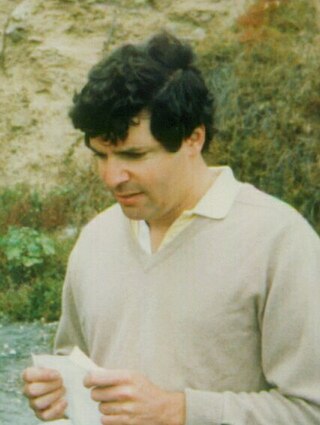
Extraterrestrial life, alien life, or colloquially simply aliens is life which does not originate from Earth. No extraterrestrial life has yet been conclusively detected. Such life might range from simple forms such as prokaryotes to intelligent beings, possibly bringing forth civilizations that might be far more advanced than humanity. The Drake equation speculates about the existence of sapient life elsewhere in the universe. The science of extraterrestrial life is known as astrobiology.

The Fermi paradox is the discrepancy between the lack of conclusive evidence of advanced extraterrestrial life and the apparently high likelihood of its existence. As a 2015 article put it, "If life is so easy, someone from somewhere must have come calling by now."
The search for extraterrestrial intelligence (SETI) is a collective term for scientific searches for intelligent extraterrestrial life, for example, monitoring electromagnetic radiation for signs of transmissions from civilizations on other planets.

The Kardashev scale is a method of measuring a civilization's level of technological advancement based on the amount of energy it is capable of using. The measure was proposed by Soviet astronomer Nikolai Kardashev (1932–2019) in 1964 and was named after him.
Extraterrestrial intelligence, or non-human intelligence, refers to hypothetical intelligent extraterrestrial life. No such life has ever been proven to exist in the Solar System except for humans on Earth, and its existence on other star systems is still speculative. The question of whether other inhabited worlds might exist has been debated since ancient times. The modern form of the concept emerged when the Copernican Revolution demonstrated that the Earth was a planet revolving around the Sun, and other planets were, conversely, other worlds. The question of whether other inhabited planets or moons exist was a natural consequence of this new understanding. It has become one of the most speculative questions in science and is a central theme of science fiction and popular culture.
The extraterrestrial hypothesis (ETH) proposes that some unidentified flying objects (UFOs) are best explained as being physical spacecraft occupied by extraterrestrial intelligence or non-human aliens, or non-occupied alien probes from other planets visiting Earth.

Paul Horowitz is an American physicist and electrical engineer, known primarily for his work in electronics design, as well as for his role in the search for extraterrestrial intelligence.
Xenoarchaeology, a branch of xenology dealing with extraterrestrial cultures, is a hypothetical form of archaeology that exists mainly in works of science fiction. The field is concerned with the study of the material remains to reconstruct and interpret past life-ways of alien civilizations. Xenoarchaeology is not currently practiced by mainstream archaeologists due to the current lack of any material for the discipline to study.

The Wow! signal was a strong narrowband radio signal detected on August 15, 1977, by Ohio State University's Big Ear radio telescope in the United States, then used to support the search for extraterrestrial intelligence. The signal appeared to come from the direction of the constellation Sagittarius and bore expected hallmarks of extraterrestrial origin.
The Ohio State University Radio Observatory was a Kraus-type radio telescope located on the grounds of the Perkins Observatory at Ohio Wesleyan University in Delaware, Ohio from 1963 to 1998. Known as Big Ear, the observatory was part of Ohio State University's Search for Extraterrestrial Intelligence (SETI) project. The telescope was designed by John D. Kraus. Construction of the Big Ear began in 1956 and was completed in 1961, and it was finally turned on for the first time in 1963.

Proposed Studies on the Implications of Peaceful Space Activities for Human Affairs, often referred to as "the Brookings Report", was a 1960 report commissioned by NASA and created by the Brookings Institution in collaboration with NASA's Committee on Long-Range Studies. It was submitted to the House Committee on Science and Astronautics of the United States House of Representatives in the 87th United States Congress on April 18, 1961.

Robert Hansen Gray was an American data analyst, author, and astronomer, and author of The Elusive Wow: Searching for Extraterrestrial Intelligence.
The cultural impact of extraterrestrial contact is the corpus of changes to terrestrial science, technology, religion, politics, and ecosystems resulting from contact with an extraterrestrial civilization. This concept is closely related to the search for extraterrestrial intelligence (SETI), which attempts to locate intelligent life as opposed to analyzing the implications of contact with that life.

Technosignature or technomarker is any measurable property or effect that provides scientific evidence of past or present technology. Technosignatures are analogous to biosignatures, which signal the presence of life, whether intelligent or not. Some authors prefer to exclude radio transmissions from the definition, but such restrictive usage is not widespread. Jill Tarter has proposed that the search for extraterrestrial intelligence (SETI) be renamed "the search for technosignatures". Various types of technosignatures, such as radiation leakage from megascale astroengineering installations such as Dyson spheres, the light from an extraterrestrial ecumenopolis, or Shkadov thrusters with the power to alter the orbits of stars around the Galactic Center, may be detectable with hypertelescopes. Some examples of technosignatures are described in Paul Davies's 2010 book The Eerie Silence, although the terms "technosignature" and "technomarker" do not appear in the book.

The Berkeley SETI Research Center (BSRC) conducts experiments searching for optical and electromagnetic transmissions from intelligent extraterrestrial civilizations. The center is based at the University of California, Berkeley.

The NIROSETI is an astronomical program to search for artificial signals in the optical (visible) and near infrared (NIR) wavebands of the electromagnetic spectrum. It is the first dedicated near-infrared SETI experiment. The instrument was created by a collaboration of scientists from the University of California, San Diego, Berkeley SETI Research Center at the University of California, Berkeley, University of Toronto, and the SETI Institute. It uses the Anna Nickel 1-m telescope at the Lick Observatory, situated on the summit of Mount Hamilton, east of San Jose, California, USA. The instrument was commissioned on 15 March 2015 and has been operated for more than 150 nights, and is still operational today.
METI International, known simply as METI, is a non-profit research organization founded in July 2015 by Douglas Vakoch that creates and transmits interstellar messages to attempt to communicate with extraterrestrial civilizations. It is based in San Francisco, California.

BLC1 was a candidate SETI radio signal detected and observed during April and May 2019, and first reported on 18 December 2020, spatially coincident with the direction of the Solar System's closest star, Proxima Centauri.

Archaeology, Anthropology, and Interstellar Communication is a 2014 collection of essays edited by Douglas Vakoch and published by NASA. The book is focused on the role that the humanities and social sciences, in particular anthropology and archaeology, play in the search for extraterrestrial intelligence (SETI). The seventeen essays are gathered into four sections, which respectively explore the history of SETI as a field; archaeological comparisons for human-alien communication, such as the difficulties of translating ancient languages; the inferential gap between humans and aliens, and the consequences this would have for communication and trade; and the potential nature of alien intelligences.
The Galileo Project is an international scientific research project to systematically search for extraterrestrial intelligence or extraterrestrial technology on and near Earth and to identify the nature of anomalous Unidentified Flying Objects/Unidentified Aerial Phenomena (UFOs/UAP).











